当前位置:网站首页>Huggingface入门篇 II (QA)
Huggingface入门篇 II (QA)
2022-08-04 23:53:00 【SCHLAU_tono】
1 任务介绍和前期准备
任务的背景如下
- 本次任务使用了MRQA-shared-task中的train和dev数据,其中包含了常见的QA数据库,例如SQuAD,NewsQA,SearchQA,HotpotQA等。
- 预训练模型是huawei-noah/TinyBERT_General_6L_768D
- 训练数据集是
HotpotQA。 - 运行环境 Google Colab (Pro)详细性能配置可以见本文章
- Model的运行代码
1.1 下载第三方库
安装Transformer和Huggingface
!pip install transformers
!pip install datasets
!pip install huggingface_hub
所使用的第三方类
import torch
from torch.utils.data import DataLoader
from transformers import AutoTokenizer, AutoModelForQuestionAnswering, AdamW, get_scheduler
from datasets import load_dataset, Dataset, DatasetDict, load_metric
from tqdm import tqdm
from sklearn.metrics import accuracy_score, f1_score
from matplotlib import pyplot as plt
import pandas as pd
import gzip
import json
import numpy as np
import os
加载与预训练的模型和tokenizer,此处使用的args是一个包含训练参数的字典,这里的配置也是得到本次任务最佳模型的训练参数:
args={
"DATASET_PATHS":[{
"TRAIN":"datasets/train/HotpotQA.jsonl.gz",
"IN_DOMAIN_DEV":"datasets/in_domain_dev/HotpotQA.jsonl.gz",
"OUT_DOMAIN_DEV":"datasets/out_domain_dev/HotpotQA.jsonl.gz",
}],
'MODEL':'huawei-noah/TinyBERT_General_6L_768D',
'EPOCHS': 5,
'VAL_BATCH_SIZE':16,
'TRAINING_BATCH_SIZE':16,
'LEARNING_RATE':2e-5,
'MAX_SIZE':256,
}
args['DEVICE'] = torch.device('cuda')
model = AutoModelForQuestionAnswering.from_pretrained(args.get('MODEL')).to(args.get('device'))
tokenizer=AutoTokenizer.from_pretrained(args.get('MODEL'))
1.2 从sharetask中下载数据
在这次的sharetask1中,作者准备好了自动下载所有训练数据据的脚本, 我们只需要将该仓库克隆到Colab中,然后再 运行该脚本 即可:
!git clone https://github.com/mrqa/MRQA-Shared-Task-2019.git
!bash MRQA-Shared-Task-2019/download_train.sh 'datasets/train'
!bash MRQA-Shared-Task-2019/download_in_domain_dev.sh 'datasets/in_domain_dev'
!bash MRQA-Shared-Task-2019/download_in_domain_dev.sh 'datasets/out_domain_dev'
1.3 加载原始数据
下载完成后,文件树如下,可以观察到各个数据集是jsonl格式的文档的gz格式压缩。
先将gz文件用gzip打开,然后用json.load读取每个文件:
def read(self,file_path):
rawdata = []
with gzip.open(file_path, 'rb') as myzip:
for example in myzip:
context = json.loads(example)
if 'header' in context:
continue
rawdata.append(context)
return rawdata
读取后的结果是一个字典的list,每个字典的结构包括 dict_keys(['id', 'context', 'qas', 'context_tokens'])。 读取完原始数据之后,由于本次是QA任务,所以只需要以下三个key的内容2:
context相关文本question根据context提出的的问题,其属于qas的子结构answers其属于qas的子结构。包括text:答案的文本,answer_start: 答案在context中的位置
我写了一个Reader类,其功能包含了以上描述的读取原始数据,提取所需的key,以及将其封装成datasets类,最后dataset的数据格式如下: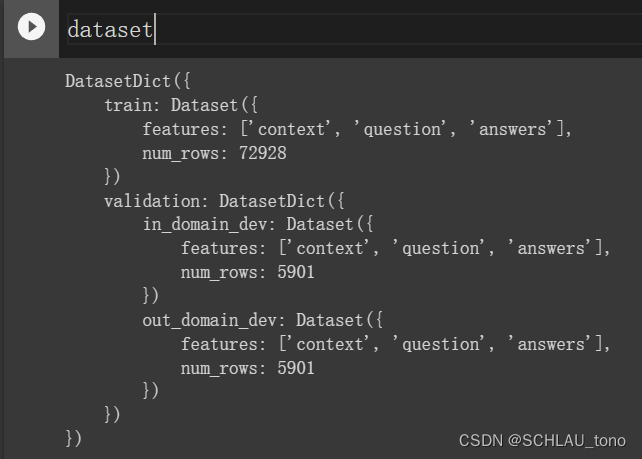
Reader以及本文完整的代码我会放入Notebook中,上传到Github。
小规模训练中,我从trainset中随机选择5000条数据作为训练数据集,从devset中随机500条作为validation
SEED=123
train_text_dataset=dataset['train'].select(range(5000)).shuffle(SEED)
dev_text_dataset=dataset['validation']['in_domain_dev'].select(range(500)).shuffle(SEED)
2 预处理数据
Recap: 该阶段的工作主要有:
- 使用
tokenizer对文本进行编码 - 找到答案的在文本中的开始位置和结束位置
使用tokenizer编码 本次任务使用预训练的tokenizer编码,为了进行第二步工作:标注答案在context中的起始位置和结束位置,需要设置return_offsets_mapping=True
标注答案位置 Tokenizer 编码返回了offset_mapping字段。格式为[(token1_start, token1_end),(token2_start,token2_end),…], 即为每个token的位置信息(坐标)。例如:
- 原文中有 “<BOS> The lovely boy.”
- 其对应的mapping信息是 [(0, 0), (0, 1), (1, 3), (3, 4), (4, 5), (6, 9), (10, 16), (17, 20), (20, 21)], mapping信息是基于字符的,因此空格也会被编码。
我们的任务是找出answer中的文本在context中对应的mapping信息(坐标)。
根据pre-processing的任务描述,我们写出大概的流程如下,get_labels的功能是标注答案位置。限于篇幅,在这里不在展开描述。
def preprocess_function(examples):
# First, let's remove duplicated spaces from the question. This occurrs in some datasets and may create problems.
questions = [q.strip() for q in examples["question"]]
# Get the features
features = tokenizer(examples[COULUMN_CONTEXT_NAME], questions, max_length=512, padding='max_length', truncation=True,return_offsets_mapping=True)
# Get the labels
(start_positions, end_positions) = get_labels(examples, features)
# Return the features
features['start_positions']=start_positions
features['end_positions']=end_positions
return features
将该函数用map应用到dataset中的每一行数据,为了减小计算,丢弃除了answers,question,context的其他字段。需要注意的是,由于get_label()中预期的输入是一组行数据,所以使用map时要将batch=True
train_encoding_dataset=train_text_dataset.map(lambda x : preprocess_function(x), batched=True,remove_columns=train_text_dataset.column_names)
dev__encoding_dataset=dev_text_dataset.map(lambda x: preprocess_function(x), batched= True, remove_columns=dev_text_dataset.column_names)
3 训练模型
Recap: 该阶段的主要工作有:
- 配置
optimizer和dataloader - 实现训练过程
3.1 配置optimizer和dataloader
为了加快训练速度,我们将数据集用set_format设置运行格式为torch上。需要注意的是,由于set_format只支持2维向量中每一行设置为torch,如果输入的是4维向量,则会展开到至2维为每一个元素设置为torch,(大致是这个意思,可能具体原因不是很精准,输入4维向量的预期结果时为其中的每个3维向量设置torch,实际上是为每个2维的向量添加了torch)因此offset_mapping字段在set_format 之后,无法建立Dataloader,而该字段在之后的evaluate阶段还需要使用,所以也不能抛弃不用。
Given
[ [(0,0), (0,0), (0,0)], [(1,1), (1,2), (3,5)]]
Expected:[tensor([(0,0), (0,0), (0,0)]), tensor([(1,1), (1,2), (3,5)])]
Got:[[tensor((0,0),tensor((0,0),tensor((0,0)],[tensor((1,1),tensor((1,2),tensor((3,5)] ]
希望有大神指点一下有没有什么比较优雅的方式处理这个问题
我的解决方法是,建立两个dataset, 例如对于训练数据集,train_endoding_dataset包含文本编码后的信息,即tokenzier的输出结果和步骤2中的答案的位置信息; train_text_dataset是文本的原始数据,包含offset_mapping
注意, 建立Dataloader时,需要丢弃最后不满一个batch的数据,因为在之后的函数处理中没有针对非batchsize整数倍的数据大小的鲁棒性检查。(懒了,而且该损失对较小的batch时模型性能表现的影响可忽略不计)
columns_names=['input_ids', 'token_type_ids', 'attention_mask','start_positions','end_positions']
train_encoding_dataset.set_format(type='torch',columns=columns_names)
dev__encoding_dataset.set_format(type='torch',columns=columns_names)
train_dataloader = torch.utils.data.DataLoader(train_encoding_dataset, batch_size=args.get('TRAINING_BATCH_SIZE'),drop_last=True)
dev_dataloader =torch.utils.data.DataLoader(dev__encoding_dataset, batch_size=args.get('VAL_BATCH_SIZE'), drop_last=True)
使用get_scheduler来封装optimization需要的信息
optimizer = AdamW(model.parameters(), lr=args.get('LEARNING_RATE'))
num_epochs = args.get('EPOCHS')
num_training_steps = num_epochs * len(train_dataloader)
lr_scheduler = get_scheduler(
"linear",
optimizer=optimizer,
num_warmup_steps=0,
num_training_steps=num_training_steps,
)
print(num_training_steps)
3.2 训练模型
4 评估模型
Recap:该阶段的主要工作有:
- 实现将模型输出结果与Gold文本进行比较和评估
- 保存模型
4.1 将预测结果与label比较
该模型的prediction实质是计算每个token是答案开始或者结束的概率。 start_logits和end_logits分别是每个在context中的token是答案开始, 结束的概率。
Recall:
offset_mapping中存储的是每个token在context中开始和结束的位置
将model的预测值转化为文本的思路:
分别从start_logits和end_logits中各取top 50的值所对应的索引
valid_answers=[]
for start_idx in start_logits:
for end_idx in end_logits:
如果(start,end)有效且offset_mapping不为空:
start_char = 从offset_mapping 中找到第start_idx个单词的开始位置
end_char =从offset_mapping 中找到第end_idx个单词的结束位置
valid_answers.append(
'score': start_idx 和 end_idx 相应的值之和
'text:': context[start_char:end_char]
)
将可能的有效答案valid_answers取score最大的一个答案,即为预测的答案
具体代码:
def postprocess_qa_predictions(dataset, features, raw_predictions, topk=1, max_answer_length=30):
predictions = dict()
for idx, item in enumerate(dataset) :
if idx==len(raw_predictions['start_logits']):
break
start_logits = raw_predictions['start_logits'][idx] # get the start_logits
end_logits = raw_predictions['end_logits'][idx] # get the end_logits
offset_mapping = features['offset_mapping'][idx] # get the offset_mapping from the dataset features
# get the context of this QA pair
context = item['context']
# Gather the indices of the best 50 start/end logits:
start_indexes = torch.topk(start_logits,50).indices
end_indexes = torch.topk(end_logits,50).indices
valid_answers = []
for start_idx in start_indexes: # for each start_index
for end_idx in end_indexes: # for each end_index
# Make sure that indexes are not out of bounds and the offset_mapping are not None
if offset_mapping is None or start_idx>=len(offset_mapping) or end_idx>=len(offset_mapping):
continue
# Don't consider answers with a length that is either < 0 or > max_answer_length.
# make sure that 1) the end_index is not smaller than the start index and 2) the answer length is smaller than the max_answer_length
if start_idx>=end_idx or (end_idx-start_idx)>max_answer_length:
continue
# if start_index is smaller than end_index
if start_idx<end_idx:
# get the char starting and ending index (hint: use the offset_mapping)
start_char = offset_mapping[start_idx][0]
end_char = offset_mapping[end_idx][1]
valid_answers.append(
{
"score": torch.sum(start_logits[start_idx]+end_logits[end_idx]), # the sum of the starting and ending logits
"text": context[start_char:end_char] # answer string. What we were looking for!!!
}
)
if len(valid_answers) == 0: # if there are no candidate answer
valid_answers.append(
{
"score": torch.Tensor([-999]).to(device),
"text": ' '
}
)
# sort the answers by descending score and pick only the best topk
valid_answers = sorted(valid_answers, key=lambda x:x['score'],reverse=True)[0]
# add the list of valid answers to the predictions dictionary
if predictions.get(str(id(predictions))) is None:
print(predictions.get(str(id(predictions))) is None)
predictions[str(id(predictions))]=[valid_answers]
print(predictions.get(str(id(predictions))) is None)
else:
predictions[str(id(predictions))]=predictions[str(id(predictions))].append(valid_answers)
return predictions
evaluation的框架:
def evaluation(model, dev_dataloader, dev_dataset):
list_outputs = []
model.eval()
# get raw predictions
for batch in dev_dataloader:
batch_tmp={
}
for k, v in batch.items():
if k == 'offset_mapping':
offset_list=[]
for element in v:
offset_list.append(element.to(device))
batch_tmp[k]=offset_list
else:
batch_tmp[k]=v.to(device)
offset_list=batch_tmp.pop('offset_mapping') # offset_mapping column is not used in training
with torch.no_grad():
outputs=model(**batch_tmp)
batch_tmp.update({
'offset_mapping':offset_list}) # insert offset into features
# post-process the predictions to get strings
predictions = postprocess_qa_predictions(dev_dataset, batch_tmp, outputs)
# compute EM and F1
return predictions
训练和评估阶段的结果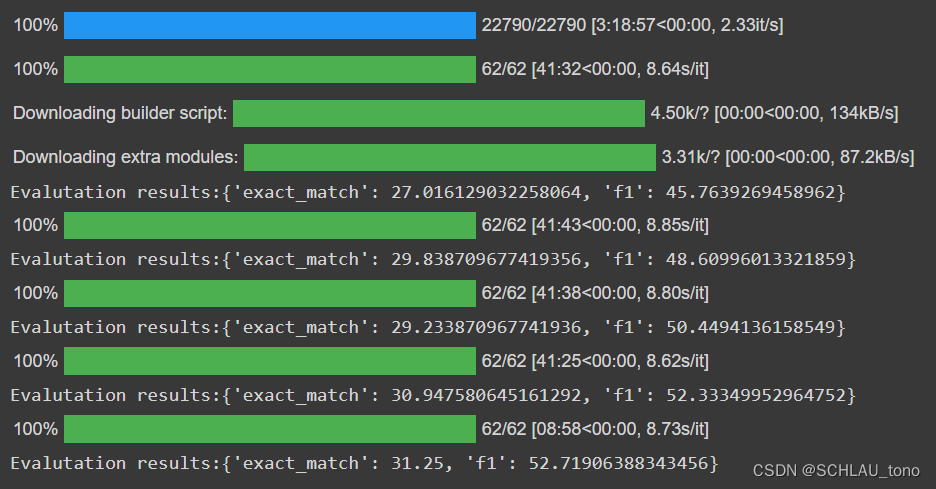
5 训练的模型开源至Huggingface
Recap:该阶段的主要工作有:
- 几种从上传Huggingface的方法
- 添加
model card
5.1 创建model仓库
在https://huggingface.co/new上填写model的名字并创建一个新的model仓库
5.2 上传model
可以手动从local本地上传,因为该过程和github push过程相似,网上有许多教程,因此不再赘述。以下主要介绍模型自动训练完后,比较结果,如果是最佳结果就自动上传。
5.2.1 使用push_to_hub上传
首先, 使用以下命令从huggingface下载model仓库到本地. clone_from所用的地址就是model在huggingface的URL,例如 https://huggingface.co/owners/model_name
from huggingface_hub import Repository
repo = Repository("Path to store repository", clone_from="URL of model repos in huggingface")
repo.git_pull()
在huggingface个人账户中添加新的access token, 然后将token粘贴复制到以下代码中,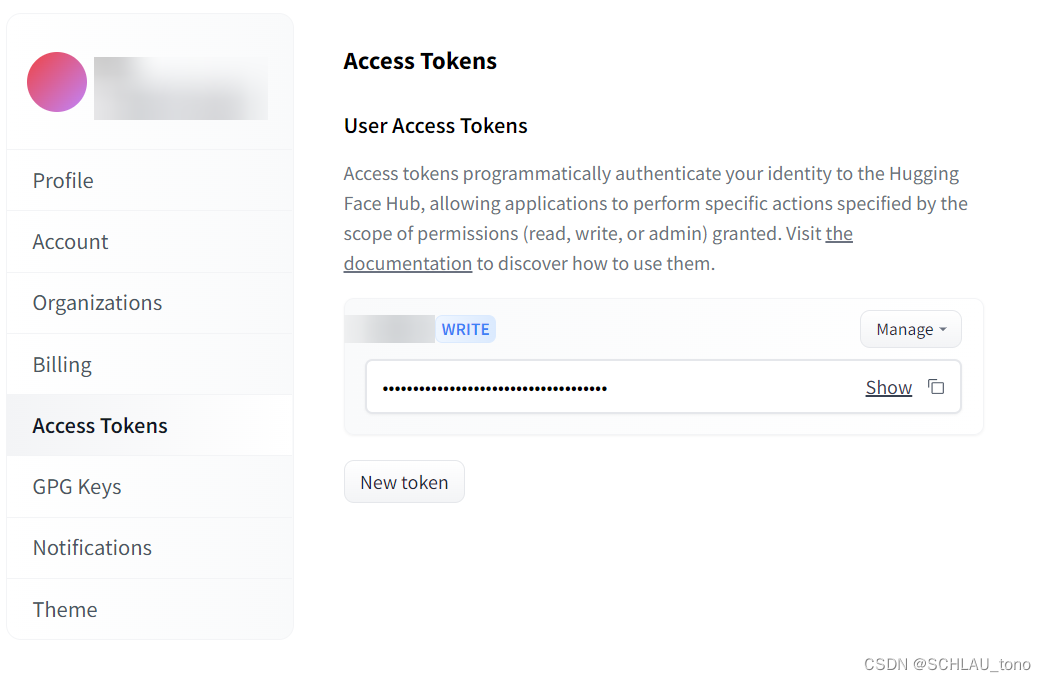
将model和tokenizer都上传到huggingface
token='Your token'
best_f1=53.53507261461125
if results.get('f1')>best_f1:
model.push_to_hub("Path to store repository ",
repo_url='RL of model repos in huggingface',
organization="huggingface", use_auth_token=token)
tokenizer.push_to_hub("Path to store repository",
repo_url='RL of model repos in huggingface',
organization="huggingface", use_auth_token=token)
边栏推荐
- OPENCV学习DAY8
- uniapp sharing function - share to friends group chat circle of friends effect (sorting)
- 情人节---快来学习一下程序员的专属浪漫吧
- 【LeetCode】图解 904. 水果成篮
- Senior game modelers tell newbies, what are the necessary software for game scene modelers?
- IDEA 文件编码修改
- Pytorch分布式训练/多卡/多GPU训练DDP的torch.distributed.launch和torchrun
- After another 3 days, I have sorted out 90 NumPy examples, and I can't help but bookmark it!
- ClickHouse 二级索引
- The role of @ Import annotations as well as how to use
猜你喜欢

Modelers experience sharing: model study method
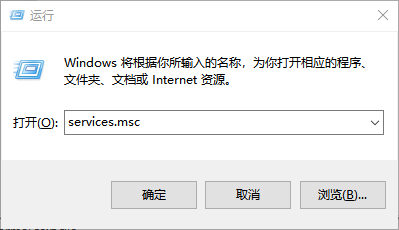
MongoDB permission verification is turned on and mongoose database configuration

入门3D游戏建模师知识必备

没有这些「伪需求」,产品经理的 KPI 怎么完成?

Security software Avast and Symantec NortonLifeLock merge with UK approval, market value soars 43%
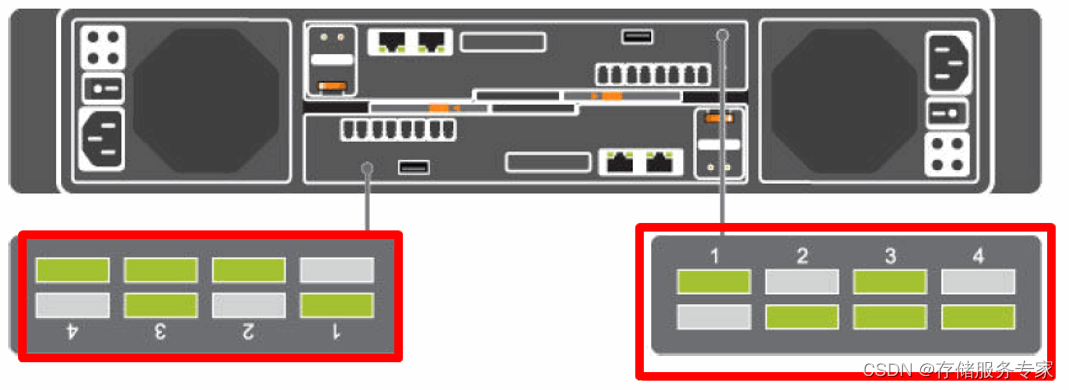
看图识字,DELL SC4020 / SCv2000 控制器更换过程

三、实战---爬取百度指定词条所对应的结果页面(一个简单的页面采集器)
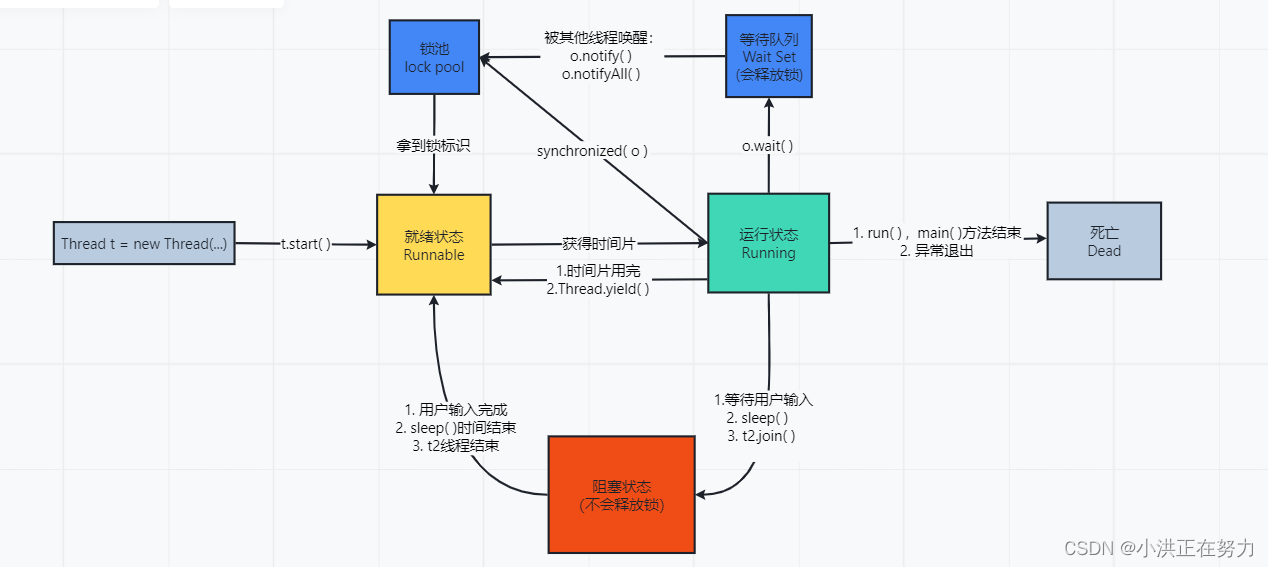
线程三连鞭之“线程的状态”
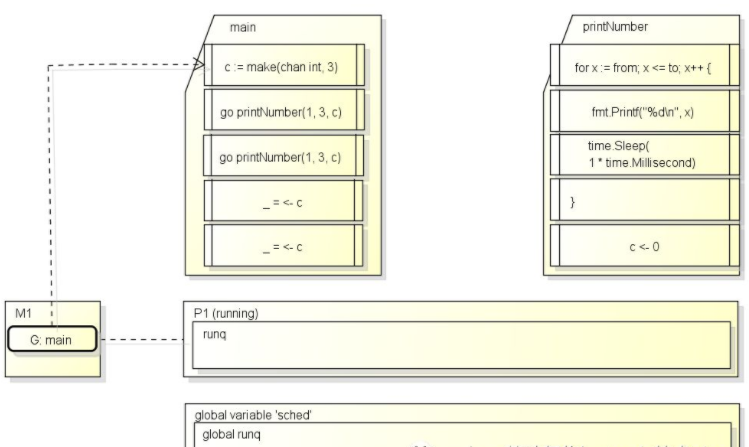
golang 协程的实现原理
![[CVA Valuation Training Camp] Financial Modeling Guide - Lecture 1](/img/8b/360df9a9094037dc358cb21c60cdc8.png)
[CVA Valuation Training Camp] Financial Modeling Guide - Lecture 1
随机推荐
Literature reading ten - Detect Rumors on Twitter by Promoting Information Campaigns with Generative Adversarial Learn
Uniapp dynamic sliding navigation effect demo (finishing)
对“为什么一些程序员很傲慢”的解读
SQL association table update
2022 Niu Ke Summer Multi-School Training Camp 5 (BCDFGHK)
【论文笔记】—低照度图像增强—Unsupervised—EnlightenGAN—2019-TIP
[LeetCode] Summary of Matrix Simulation Related Topics
Go 语言快速入门指南:什么是 TSL 安全传输层
隐私计算综述
407. 接雨水 II
Cython
365天深度学习训练营-学习线路
工业物联网 —— 新型数据库的召唤
导入JankStats检测卡帧库遇到问题记录
【LeetCode】Summary of Two Pointer Problems
.net(C#)获取两个日期间隔的年月日
mysql基础
【七夕情人节特效】-- canvas实现满屏爱心
jenkins send mail system configuration
2022牛客暑期多校训练营5(BCDFGHK)